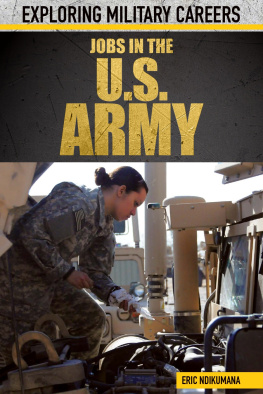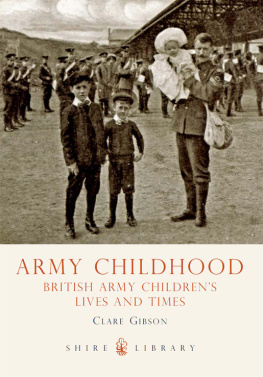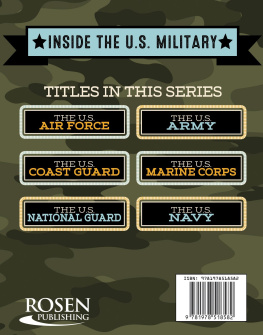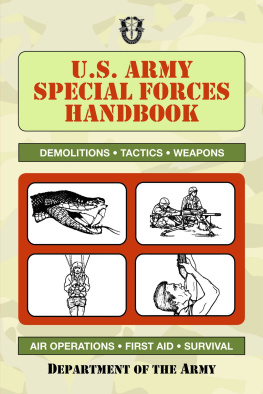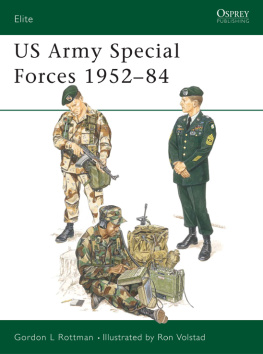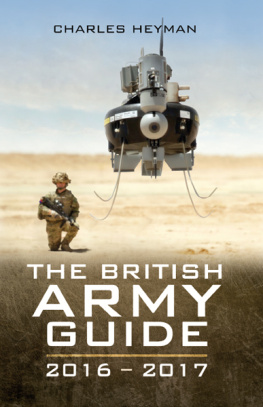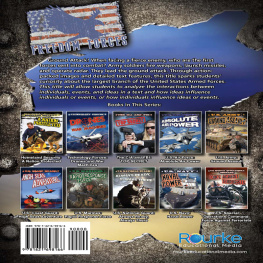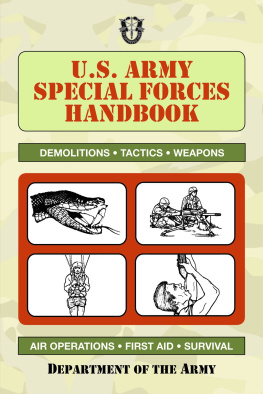Published in 2023 by The Rosen Publishing Group, Inc.
29 East 21st Street, New York, NY 10010
Copyright 2023 by The Rosen Publishing Group, Inc.
Portions of this work were originally authored by Earle Rice Jr. and published as Careers in the U.S. Army. All new material in this edition was authored by Eric Ndikumana.
All rights reserved. No part of this book may be reproduced in any form without permission in writing from the publisher, except by a reviewer.
Cataloging-in-Publication Data
Names: Ndikumana, Eric.
Title: Jobs in the U.S. Army / Eric Ndikumana.
Description: New York : Rosen Publishing, 2023. | Series: Exploring military careers
| Includes glossary and index.
Identifiers: ISBN 9781499469929 (pbk.) | ISBN 9781499469936 (library bound) |
ISBN 9781499469943 (ebook)
Subjects: LCSH: United States. Army--Juvenile literature. | United States. Army--Vocational
guidance--Juvenile literature.
Classification: LCC UA25.N355 2023 | DDC 355.00973--dc23
Some of the images in this book illustrate individuals who are models. The depictions do not imply actual situations or events.
Manufactured in the United States ofAmerica
CPSIA Compliance Information: Batch #CSRYA23. For further information, contact Rosen Publishing, NewYork, New York, at 1-800-237-9932.
CHAPTER 1
GROWING THE GROUND FORCE
CHAPTER 2
INFIGHTING AND MOVING WEST
CHAPTER 3
THE TWO WORLD WARS
CHAPTER 4
CONFLICT OF A DIFFERENT KIND
CHAPTER 5
AN ATTACK ON AMERICAN SOIL
CHAPTER 6
A STRONG, DIVERSE ARMY
CHAPTER 7
RANKS AND RESERVES
CHAPTER 8
CAREERS FOR TODAYAND TOMORROW
GROWINGTHE GROUNDFORCE
T he U.S. Army has a history as old as the United States itself. Though the modern army has undergone many changes over its centuries-long history, one thing has not changed: the branchs commitment to defending the country through the deployment of ground troops and land-based weaponry. Army soldiers have fought in countless conflicts, protecting peace both at home and abroad when called upon.
A set of principles called the Warrior Ethos is essential for the 21st-century soldier. Beginning as early as boot camp training, army soldiers are taught the four ideas of the Warrior Ethos, to which they must adhere:
- I will always place the mission first.
- I will never accept defeat.
- I will never quit.
- I will never leave a fallen comrade.
Soldiers live by these words, internalizing them until they can be recited from memory. By following the Warrior Ethos, members of the army learn how to become better fighters, better friends, and better citizens. Army soldiers are behind some of the U.S. militarys most courageous stories.
THE BIRTH OF THE ARMY
The U.S. Army is the same age as the United States it was created to defend. In 1760, George III claimed the throne of Great Britain and Ireland. At the time, the Seven Years War (i756-i763)known in North America as the French and Indian Warwas still raging. After its conclusion, the new king found himself facing a huge debt because of the war. To regain financial power, the British government launched a series of new and increased taxes in North America. Colonists, angry at these new changes and increasingly hungry for independence, started to raise and train citizen militias. By the spring of 1775, colonial America had reached open rebellion.
Needless to say, the British were not pleased with the new developments across the sea. On April 14, 1775, General Thomas Gage was ordered to seize militia arms stockpiled in Concord, Massachusetts. Gage was the British commander in chief in North America; he was also the governor of the Massachusetts colony. Gage sent 700 soldiers to destroy the stash of arms.
During their march to Concord, British soldiers engaged and defeated a group from the small Massachusetts militia known as minutemen at Lexington on April 19, 1775. This nickname came from their reported ability to assemble for battle quicklywith a minutes notice. When they arrived at Concord, the British met a larger force of minutemen. The British were forced to march back to Boston, leaving their mission unfulfilled. In these short battles, the shots heard round the world had been fired: the American Revolution had begun.

King George III was the ruler of Britain during the time of the American Revolution.
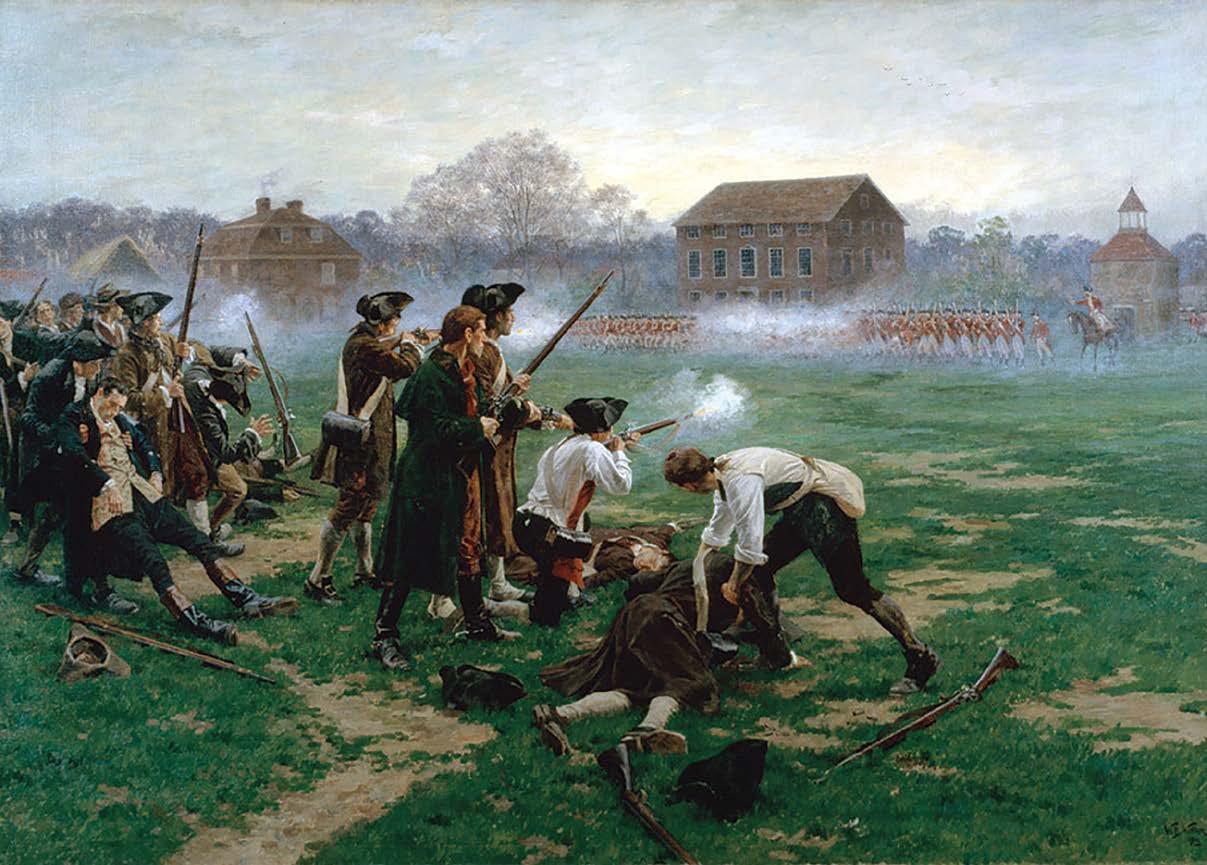
The American Revolution began with a bang, as the colonists clashed with the British at Lexington and Concord.
Before long, militia groups from all over New England laid siege to Boston. Their assault would not stop for almost a year. Meanwhile, the Continental Congressthe main colonial law-making body at the time-unified the colonial militias as the Continental Army on June 14, 1775. Congress selected George Washington to lead the army. Washington, a Virginia soldier and planter, became the U.S. Armys first commander in chief.
Though Washington accepted the command, he was hesitant to do so. He believed that he was unequal to the huge task of leading his soldiers to victory against the British. However, after he took the position, he quickly warmed up to the challenge. He rightly assessed that he and the army had a chance to change the course of history and create a nation the likes of which had never been seen. Under his steady leadership, the United States emerged victorious. After the fighting, Washington went on to serve two terms as the first U.S. president.
The Continental Army was a unique military force at the time. It was mostly made up of long-term volunteers. Its size ranged roughly from 5,000 to 20,000 troops. Soldiers sometimes had to supply their own uniforms. Most men wore work or hunting clothes. Washington himself wore the blue and buff of the Virginia militia, but green and brown became the main uniform colors because those dyes were most available. Blue did not become the official color until 1779.
WASHINGTON WINS
The American Revolution stretched across eight years. Early on, Congress had favored trying to win the war by risking everything in a single large battle. Washington disagreed. He knew that the colonies needed more time to build and train an army that would be strong enough to go toe-to-toe with the British. In the autumn of 1776, Washington changed the risky American strategy of taking a chance on a single large-scale battle to draw out the conflict. This strategic change bought the time the nation needed to build a strong army. The Continental Army wore down the British over time, and America won its independence. After the war ended, the army was disbanded.

